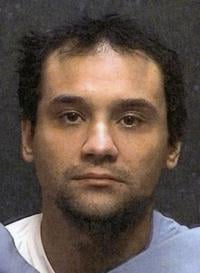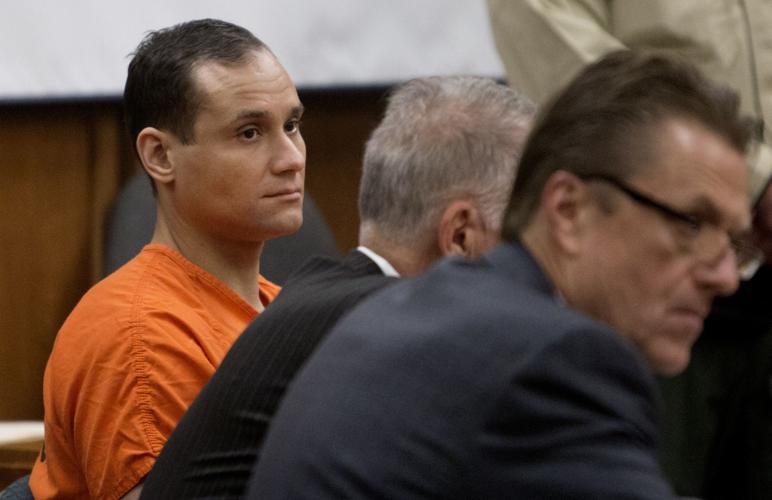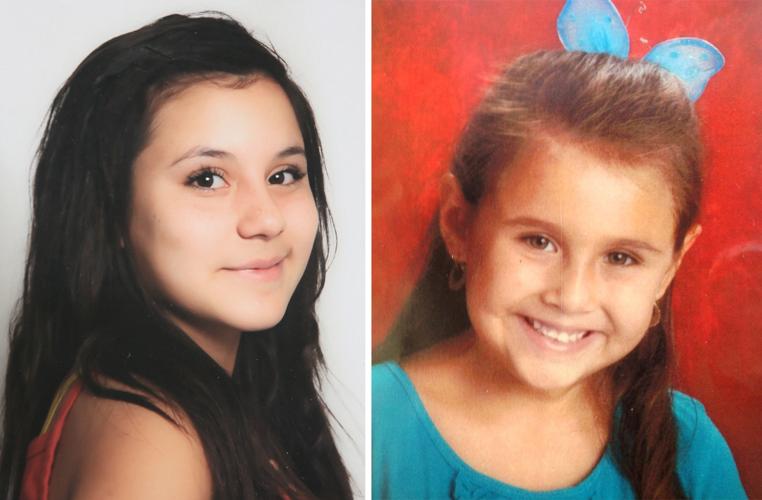A man accused of killing two Tucson girls is asking that several of the charges against him be reconsidered, saying the state failed to present evidence to the grand jury, and placing blame on one of the victim’s fathers.
Christopher Clements, 36, appeared in Pima County Superior Court Monday for a status conference in his capital murder case. Clements was indicted in September in connection with the deaths of 6-year-old Isabel Celis and 13-year-old Maribel Gonzalez. He’s facing 22 related charges, including two counts of first-degree murder and two counts of kidnapping.
On March 29, Clements’ attorneys filed a motion to reconsider several counts in the indictment, arguing that the state failed to present evidence to the grand jury.
Deputy Pima County Attorney Jonathan Mosher filed a 39-page response to the motion, with 595 pages of related exhibits, including transcripts of interviews, letters Clements wrote to his fiancé, police documents and a DVD.
Clements’ motion for redetermination was no longer available in court records Monday morning. The state’s response included a request to seal the grand jury transcript, which Judge Deborah Bernini granted.
The state’s response said that Clements’ motion was “riddled with factual errors” and that the evidence presented to the grand jury went “far beyond probable cause.”
The response says that the evidence presented to the grand jury proves Clements’ “motive, plan, opportunity and intent in abducting and murdering two Hispanic female child victims in the case.”
The response detailed Clements’ “unusual obsession” with Acuras and said the grand jury heard testimony that a man matching Clements’ description came by the house prior to Isabel’s disappearance to ask about purchasing a red Acura parked in front of the Celis house.
During Clements’ later negotiations with the FBI to provide information about the location of Isabel’s body, he was adamant that he wouldn’t release information unless his Acura was released from police custody in an unrelated burglary charge.
The grand jury also heard evidence that on April 21, 2012 — the morning Isabel’s family discovered her missing — Clements spent $110 on a car wash for his Acura, the same one that was in police custody when he was negotiating with the FBI.
The grand jury also saw evidence of phone records from the dates of Isabel’s and Maribel’s disappearances that link Clements to the areas where they went missing, and later pinged off cellphone towers by Avra Valley and Trico Roads, where the remains of both girls were later found, according to the response.
The day after Isabel was reported missing, Clements canceled phone service for the number that had pinged, the response said.
Evidence was also presented to the grand jury showing that DNA evidence found on Maribel’s body was a partial match to Clements.
The response spent a significant portion addressing what it called the defense’s baseless claims against Isabel’s father, Sergio Celis.
“Sergio Celis may have been convicted by the court of public opinion based on rumor, gossip and speculation,” the response said. “But now that evidence of these crimes has come to light, no reasonable grand juror could conclude he had anything to do with his daughter’s disappearance.”
Clements’ computer revealed searches for “Isabel Celis not kidnapped,” which the state said in the response showed that Clements researched “blame Sergio” theories, rumors and gossip.
A search of one of Clements’ iPads revealed “a number of photos depicting young girls in fenced residential yards and in front of residences,” many of which appeared candid. Further investigation by police revealed that many of the photos of Hispanic girls were later tied to locations in Pima County, the response said.
The grand jury was also presented with evidence that Clements’ computer contained a thumbnail image that appears to be a selfie of Clements in the front seat of a car with a young girl “who bears a striking resemblance” to Isabel lying in the backseat, the response said.
When questioned about the image, Clements said that the child was his 1½-year-old blond-haired son.
When investigators showed the picture to the mother of Clements’ son, “she started shaking” and didn’t identify the child as her own, the response said.
To send the case back to the grand jury is only appropriate if a substantial procedural right was denied, and in this case it wasn’t, the County Attorney’s Office argued.
“There is not one single argument in defendant’s motion which might have affected the grand jury’s probable cause determination,” the response said, adding that Arizona law requires a motion to cite supporting facts and authorities, which Clements’ did not.
During the hearing, Clements’ lawyers asked for an additional two weeks to prepare their written reply to the state’s response, which Bernini granted, giving Clements’ lawyers until April 26.
Bernini urged both sides to start interviewing witnesses, saying she wouldn’t allow proceedings here to be delayed by Clements’ pending cases in Maricopa County.
Timeline
Timeline: Man indicted in the killing of 2 Tucson girls
April 21, 2012
Updated
Isabel Celis
In 2012, 6-year-old Isabel Celis went missing from her midtown home. The incident happened at night as the family slept. No one heard any sounds.
Isabel's father, Sergio, reported Isabel missing the following morning on April 21, 2012, after searching for her with her two older brothers.
They found her bedroom window open.
Her disappearance shook the city of Tucson, as the community united to help find her. Tucson police received thousands of tips throughout their investigation.
June 3, 2014
Updated
Maribel Gonzalez’s body was found June 6, 2014.
In June of 2014, 13-year-old Maribel Gonzalez told her family she was going to visit a friend.
When Maribel didn't come home the following morning, her mother called the friend who told her that Maribel never arrived.
Maribel was reported missing and was initially treated as a runaway, Arizona Daily Star archives show.
Maribel's home was said to be minutes away from Isabel's.
June 6, 2014
Updated
Photos of murder victim Maribel Gonzalez on display during a press conference held by Homicide Survivors, Inc. in 2016.
Just a few days later, Maribel's body was found in a desert area northwest of Tucson, near North Trico and West Avra Valley roads.
There were no suspects at the time.
March 31, 2017
Updated
Approximately 500 mourners release pink and purple balloons in a farewell gesture to wrap up the memorial ceremony for Isabel Celis at St. Augustine Cathedral, Saturday, April 29, 2017.
Years after Isabel went missing, her remains were found northwest of Tucson — in roughly the same area as Maribel's body.
Police Chief Chris Magnus informed the public of their discovery on March 31, 2017, though the remains were found earlier in the month.
Officials remained tight-lipped about the case and would not discuss how investigators were led to Isabel's remains.
September 14, 2018
Updated
Tucson Police Chief Chris Magnus, Pima County Attorney Barbara LaWall and Pima County Sheriff Mark Napier at a press conference at TPD on Sept. 15, 2018. Christopher Matthew Clements was indicted in connection with the deaths of Isabel Celis and Maribel Gonazalez.
On Sept. 14, 2018, 36-year-old Christopher Matthew Clements was indicted. He is accused of killing both Isabel and Maribel.
Authorities announced the indictment the following day, Sept. 15. They revealed that in 2017, FBI agents received a tip about a man who might know more information about Isabel's disappearance.
Clements, a convicted sex offender, was the man.
After speaking with Clements, investigators were able to find Isabel's remains.
Clements is facing 22 charges that include two counts of first-degree murder, two counts of kidnapping of a minor under age 15, burglary, and 14 counts of sexual exploitation of a minor, which is said to be related to child pornography.
He is currently being held in the Maricopa County jail on unrelated charges.
Records show that Clements has a long criminal history and that he was out of jail on bail when Maribel was killed.
September 21, 2018
Updated
Christopher Matthew Clements
On Sept. 21, 2018, the Star obtained new court documents showing that Clements led investigators to Isabel's remains after asking for unrelated burglary charges to be dropped.
He also asked that his impounded car be released. Investigators agreed to his terms.
The same court documents show that DNA taken from Maribel's body was linked to Clements.
They also say that investigators found a letter from Clements that implied there were four bodies left in the desert area.
Investigators also found schoolwork and a child's purple sweater in the home of Clements' girlfriend. Sexually explicit photos of children were found on a computer, in addition to internet searches such as "child killer found not guilty" and "body found in desert."
September 24, 2018
Updated
Christopher Clements is arraigned via video in Pima County Superior Court in Tucson on Sept. 25, 2018. Clements is accused of killing Isabel Celis and Maribel Gonzalez.
Clements pleaded not guilty in a court appearance at Pima County Superior Court on Sept. 24, 2018.
Families of Isabel and Maribel were in the courtroom for the video arraignment.
Clements appeared to have a black eye. The week prior, officials confirmed that he had gotten into a fight with two other inmates at the Maricopa County jail.
February 11, 2019
Updated
Christopher Clements sits at the defense table with his lawyers during a status conference in Pima County Superior Court.
On Friday, Feb. 8, the county attorney's office filed notice that they would be pursuing the death penalty.
On Monday, Feb. 11, Judge Deborah Bernini said she would be drafting up a document to address pre-screenings, which includes an IQ screen.
"We don't take five years to try death penalty cases here like they typically do in Phoenix," Bernini told Clements' lawyers, Eric Kessler and Joseph DiRoberto, adding that she wanted to give them adequate time to file an objection to the pre-screening.
The hearing addressed several other items, including the state's motion to appoint a special master to review recordings of dozens of recorded jail phone calls between Clements and Tucson attorney John Kaufmann, who represented Clements in a 2012 case.
.





